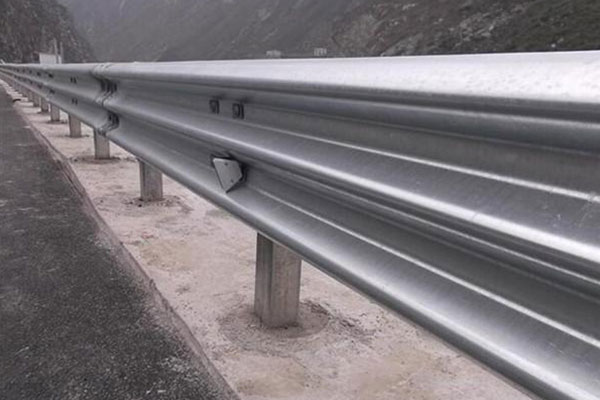Highway Guardrail Dimensions: A Complete Guide
When it comes to highway safety, guardrails play a critical role in protecting drivers, reducing crash severity, and preventing vehicles from leaving the roadway. One of the most important aspects of guardrail performance is its dimensions, which determine its ability to absorb impact and deflect vehicles effectively.
What is a Highway Guardrail?
A highway guardrail is a safety barrier installed along the sides of roads, bridges, or medians to reduce the impact of collisions. Guardrails are designed to:
- Redirect errant vehicles
- Prevent rollover accidents
- Minimize injury in case of impact
- Protect pedestrians and roadside structures

Standard Highway Guardrail Dimensions
1. W-Beam Guardrail Dimensions (Most Common Type)
The W-beam is the most common type of guardrail used on highways worldwide.
| Component | Standard Size |
|---|---|
| Rail Length | 4.32 m (14 ft) or 3.81 m (12.5 ft) |
| Rail Height (above ground) | 750 mm to 810 mm (29.5″ to 32″) |
| Rail Thickness | 2.67 mm (12 gauge) or 3.43 mm (10 gauge) |
| Post Height | 1828.8 mm (6 ft) standard steel post |
| Post Spacing | 1905 mm (6 ft 3 in) center-to-center |
W-beam guardrails are typically mounted on C-channel or I-beam steel posts, which are either driven into the ground or set in concrete, depending on site conditions.
2. Thrie-Beam Guardrail Dimensions
Thrie-beam guardrails are wider and offer better impact resistance, often used in high-speed or high-impact zones.
| Component | Standard Size |
|---|---|
| Rail Length | 4.32 m (14 ft) |
| Rail Width | Approximately 510 mm (20″) |
| Post Spacing | Same as W-beam (1905 mm) |
These are often installed where greater containment is needed—such as near medians, on bridges, or in areas with heavy truck traffic.
3. End Terminals and Transitions
End terminals are essential for energy absorption and safe termination of the guardrail system.
| Component | Dimension / Length |
|---|---|
| End Terminal Length | 3 m to 12 m, depending on type |
| Transition Sections | Tapered to connect W-beam to Thrie-beam or to bridge railings |
Key Components That Affect Guardrail Sizing
- Terminal ends: Length and shape affect total guardrail length.
- Post embedment depth: Usually 1.2–1.5 meters for stable support.
- Blockouts: Spacers between the rail and post, typically 8” or 12” deep.
Regional Differences in Guardrail Dimensions
United States (AASHTO M180):
- Rail Height: 31″
- Standard Length: 12’6″
- Post Spacing: 6’3″
Europe (EN 1317):
- Rail Height: Typically 750–900 mm
- Guardrails must meet performance classes (N2, H1, H2, etc.)
Australia:
- Rail Height: ~700 mm
- Rail Lengths: 3.81 m (12’6″) or custom

Factors to Consider When Choosing Guardrail Dimensions
- Road Type and Speed Limit: High-speed highways require taller and more robust barriers.
- Vehicle Types: Roads frequented by trucks may need stronger or taller systems.
- Site Conditions: Soil type, slope, and roadside hazards affect post length and rail spacing.
- Regulatory Compliance: Always follow national standards such as AASHTO M180 or EN 1317.
FAQs
Yes, depending on the type of road and vehicle crash data, some installations may require increased or reduced rail heights.
Generally, a minimum of 50 feet (15 meters) is recommended before and after the hazard for full effectiveness.
Most are hot-dip galvanized to meet corrosion-resistance standards, especially for outdoor and coastal environments.
Conclusion
Whether you’re a road contractor, civil engineer, or procurement officer, understanding highway guardrail dimensions is vital for road safety and project success. Make sure to consult relevant national guidelines and work with certified suppliers to ensure your guardrail system meets both regulatory and performance standards.
Looking for a reliable supplier of crash-tested guardrail systems? Contact us today for specifications, pricing, and expert support.

